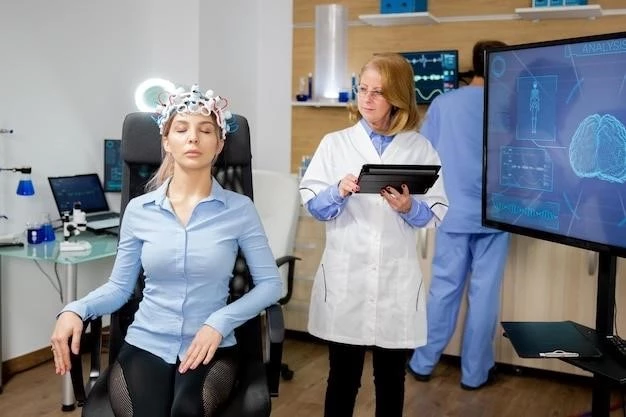Introduction
Neuropathy, hereditary motor and sensory, LOM type, is a rare and severe form of Charcot-Marie-Tooth disease.
Definition of Neuropathy, Hereditary Motor and Sensory, LOM Type
Neuropathy, hereditary motor and sensory, LOM type, is a rare form of Charcot-Marie-Tooth disease first discovered in Romany (Gypsy) families from Bulgaria. It is characterized by autosomal recessive inheritance and manifests as severe disabling nerve damage affecting motor and sensory functions.

Historical Background
Neuropathy, hereditary motor and sensory, LOM type, was first discovered in Romany families from Bulgaria.
Discovery in Romany (Gypsy) Families
Neuropathy, hereditary motor and sensory, LOM type, was initially identified in Romany (Gypsy) families in the Lom community of Bulgaria, showing distinctive clinical features and genetic characteristics.
Initial Identification in Gypsy Community of Lom
Neuropathy٫ hereditary motor and sensory٫ LOM type٫ was first identified in the Gypsy community of Lom in Bulgaria٫ characterized by severe disabling nerve damage and unusual neuropathologic features.

Clinical Presentation
Neuropathy, hereditary motor and sensory, LOM type, is characterized by severe disabling nerve damage affecting motor and sensory functions.
Symptoms in Affected Individuals
Affected individuals of Neuropathy, hereditary motor and sensory, LOM type, experience severe lower limb muscle weakness, walking difficulties, frequent falls, and later onset upper limb weakness, often beginning in childhood.
Onset and Progression of the Disease
Neuropathy, hereditary motor and sensory, LOM type typically manifests in childhood with symptoms such as lower limb muscle weakness and walking difficulties, progressing to upper limb weakness. Bulbar involvement and deafness may also be present during the course of the disease.
Genetic Basis
Neuropathy, hereditary motor and sensory, LOM type, is caused by a mutation in the N-Myc downstream regulated gene 1 (NDRG1 gene).
Mutation in N-Myc Downstream Regulated Gene 1 (NDRG1 Gene)
The hereditary motor and sensory neuropathy٫ LOM type٫ is associated with a mutation in the N-Myc downstream regulated gene 1 (NDRG1 gene)٫ leading to severe nerve damage affecting motor and sensory functions.
Inheritance Patterns⁚ Autosomal Recessive and Autosomal Dominant
Neuropathy, hereditary motor and sensory, LOM type, shows inheritance patterns of autosomal recessive and autosomal dominant, affecting both sensory and motor nerve functions.
Electrophysiological Observations
Electrophysiological studies on Neuropathy, hereditary motor and sensory, LOM type, revealed distinctive nerve conduction abnormalities.
Findings on Large Kindred with HMSNL
Electrophysiological studies on a large kindred with hereditary motor and sensory neuropathy LOM type revealed distinctive nerve conduction abnormalities in the affected individuals, contributing to the understanding of the disease.
Presence of Bulbar Involvement and Deafness
Individuals with hereditary motor and sensory neuropathy LOM type may exhibit bulbar involvement and deafness as additional manifestations of the disease.
Diagnostic Challenges
The diagnosis of Neuropathy, hereditary motor and sensory, LOM type, presents challenges due to underdiagnosis and misclassification, emphasizing the critical role of comprehensive evaluations.
Underdiagnosis and Misdiagnosis of Inherited Neuropathies
The underdiagnosis and misdiagnosis of inherited neuropathies, including Neuropathy, hereditary motor and sensory, LOM type, pose significant challenges, often requiring comprehensive evaluations and detailed genetic testing for accurate diagnosis.
Importance of Family History in Diagnosis
The identification of inherited neuropathies like Neuropathy, hereditary motor and sensory, LOM type, often relies significantly on understanding the patient’s family history, emphasizing the crucial role family medical backgrounds play in accurate diagnosis.
Neuropathy, hereditary motor and sensory, LOM type, has been identified in various Gypsy communities across Europe.
Prevalence and Distribution
Neuropathy, hereditary motor and sensory, LOM type, has been identified in various Gypsy communities across Europe, with cases reported in Italy, Spain, Slovenia, and Hungary, reflecting a global presence of the condition.
Global Presence⁚ Cases in Italy, Spain, Slovenia, and Hungary
Neuropathy, hereditary motor and sensory, LOM type, has a global presence with documented cases in Italy, Spain, Slovenia, and Hungary, indicating its widespread distribution across different regions.
Clinical, Electrophysiological, and Pathological Findings
Information regarding the clinical, electrophysiological, and pathological findings in patients diagnosed with hereditary motor and sensory neuropathy LOM type.
Description in First Spanish Family with HMSNL
The clinical, electrophysiological, pathological, and genetic findings in the first Spanish family diagnosed with hereditary motor and sensory neuropathy LOM type (HMSNL) highlighted specific characteristics of the disease within this unique family context.
Longitudinal Follow-Up of Affected Patients
The longitudinal follow-up of patients diagnosed with hereditary motor and sensory neuropathy LOM type (HMSNL) provides valuable insights into the progression and management of the disease over time, offering a comprehensive understanding of its clinical course.
Understanding the classification of hereditary motor and sensory neuropathies involves genetic and clinical distinctions;
Classification of Hereditary Motor and Sensory Neuropathies
The classification of hereditary motor and sensory neuropathies involves an evolving transition from clinical descriptions to more genetic-based categorizations, reflecting advancements in understanding the genetic underpinnings of these conditions.
Challenges in Defining Subtypes and Causative Genes
The classification of hereditary motor and sensory neuropathies faces challenges in defining specific subtypes and identifying the causative genes responsible for different forms of these conditions, highlighting the complexity of genetic characterization in neuropathy research.
Other Forms of Hereditary Neuropathies
The realm of hereditary neuropathies encompasses various forms that impact neural communication disruptions between afferent and efferent pathways.
Overview of Hereditary Optic Neuropathies (HONs)
Hereditary Optic Neuropathies (HONs) encompass a diverse group of disorders primarily caused by mitochondrial dysfunction resulting from genetic defects in mitochondrial and nuclear genomes. These conditions lead to various optic nerve pathologies affecting vision.
Diversity within Hereditary Sensory Neuropathies (HSNs)
Hereditary Sensory Neuropathies (HSNs) encompass a diverse spectrum of disorders affecting afferent nerve functions, leading to various sensory impairments and manifestations across different subtypes within this group.
Current Research and Developments
Genetic advances in hereditary retinal diseases and optic neuropathies are currently a focus of research, aiming to deepen the understanding of the underlying genetic mechanisms contributing to these conditions. Additionally, developments in pipeline products for multifocal motor neuropathy treatment are showing promise in enhancing therapeutic options for affected individuals.
Genetic Advances in Hereditary Retinal Diseases and Optic Neuropathies
Current research focuses on genetic advancements in hereditary retinal diseases and optic neuropathies, aiming to deepen the understanding of the genetic mechanisms underlying these conditions for improved diagnosis and treatment strategies.
Pipeline Products for Multifocal Motor Neuropathy Treatment
The development of pipeline products for multifocal motor neuropathy treatment shows promise in potentially expanding therapeutic options and improving outcomes for individuals with this condition.
Future Prospects and Implications
Emerging therapeutic strategies for hereditary neuropathies show promise in advancing disease management through genetic discoveries which could potentially revolutionize treatments for individuals affected by these conditions.
Emerging Therapeutic Strategies for Hereditary Neuropathies
Recent developments in therapeutic strategies for hereditary neuropathies offer new possibilities for improved disease management, showcasing the potential for innovative treatment approaches to address the complex nature of these conditions.
Potential Impact of Genetic Discoveries on Disease Management
Advancements in genetic discoveries have the potential to significantly impact the management of hereditary neuropathies, offering novel insights into personalized treatment strategies based on individual genetic profiles, thereby revolutionizing the approach to managing these complex conditions.
Collaborative Efforts and Research Initiatives
Understanding neuropathy, hereditary motor and sensory, LOM type, requires collaborative efforts from sensory motor neuroscience labs and interdisciplinary approaches in studying neural systems for comprehensive insights.
Role of Sensory Motor Neuroscience Labs in Understanding Neuropathies
Sensory Motor Neuroscience Labs play a crucial role in advancing the understanding of hereditary motor and sensory neuropathies, utilizing interdisciplinary approaches to unravel the complexities of neural systems and contribute to comprehensive insights into these conditions.
Interdisciplinary Approaches for Studying Neural Systems
Interdisciplinary approaches play a vital role in studying neural systems and understanding hereditary motor and sensory neuropathies, enabling a comprehensive investigation into the complexities of neural function in these conditions.
Conclusion
Summary of key findings on Neuropathy, hereditary motor and sensory, LOM type, highlighting the complexity and impact on affected individuals.
Summary of Key Findings on Neuropathy, Hereditary Motor and Sensory, LOM Type
Key findings on Hereditary Motor and Sensory Neuropathy, LOM Type, highlight the genetic complexities, clinical manifestations, and global impact of this condition.
